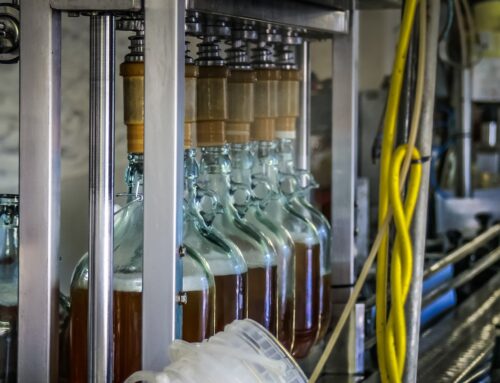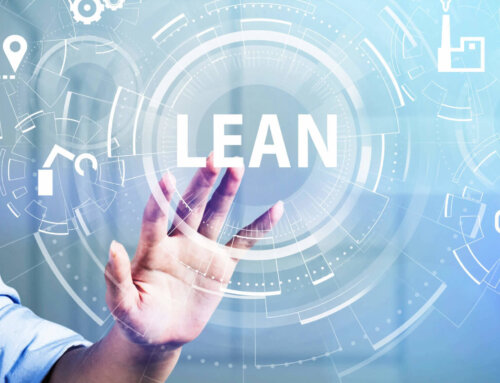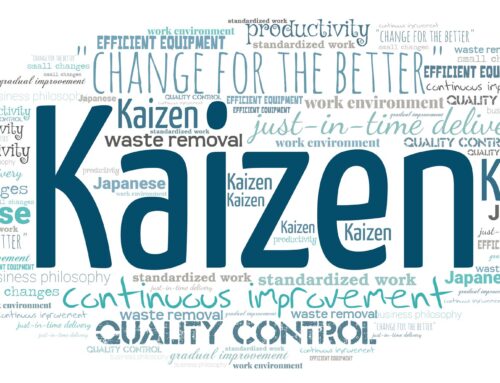By Gene Russell, Manex President and CEO
Kaizen is a power tool to advance lean and continuous improvement in your company. This article explains daily Kaizen and periodic Kaizen events
According to John Shook, Chairman and CEO of the Lean Enterprise Institute, the Continuous Improvement Cycle consists of three steps:
- Seeing the workplace
- Identifying problems
- Implementing solutions
Another popular model is the PDCA cycle: plan, do, check, act. The American Society for Quality (ASQ) defines the PDCA cycle as follows:
- Plan. Recognize an opportunity and plan a change.
- Do. Test the change. Carry out a small-scale study.
- Check. Review the test, analyze the results, and identify what you’ve learned.
- Act. Take action based on what you learned in the study step: If the change did not work, go through the cycle again with a different plan. If you were successful, incorporate what you learned from the test into wider changes. Use what you learned to plan new improvements, beginning the cycle again.
What is the most difficult PDCA element? It depends on the company, the culture, and the team. Acting without planning only provides a bit of keystone cop humor at best. Not really testing the change can replace one process with a worse one. Methodical step by steps are crucial.
You cannot implement lean/continuous improvement by yourself or just with managers. You need the operators, the production team, and others working together. You need Kaizen.
Which Kaizen technique should you implement? Daily Kaizen or periodic Kaizen events?
Kaizen should be implemented on a day-to-day level in addition to holding periodic Kaizen events. Daily Kaizen and Kaizen events are not exclusive of each other.
Kaizen events, also known as Kaizen blitzes, are short-duration events, usually in the form of a week-long workshop, in which a facilitator (such as a Manex expert) guides a team in improving an area with a specific aim in mind. These events may be held when there is an urgent issue that needs to be resolved, or as a focused exercise to identify areas for improvement on a periodic basis. We find that these events are the pathways for employee empowerment and creating cultures of excellence. The best, most informed ideas often come from your operators on the floor.
On a day-to-day level, the team should gather on a regular basis to discuss potential solutions to resolve a previously identified issue. This practice should be incorporated into already-established meetings that already occur regularly, typically at the beginning of every shift. In my last role turning around a California-based manufacturer, these daily meetings were a mix of communication, warm-up exercises, safety discussions, and Kaizen.
During a Kaizen event, the facilitator leads the team that works in the area in which the event is being conducted in standardizing and documenting processes and identifying, implementing, and documenting improvements to that area. After the event, improvement opportunities are prioritized based on the needs of the business. Most managers are pleasantly surprised by their team’s performance and ideation for improvements
When should I hold a Kaizen event?
Scheduled Kaizen events are necessary to tackle large problems. Kaizen events maintain a culture of solving the root cause of problems before they become bigger. We use events to introduce Kaizen, 5S, and Lean to new Manex manufacturing partners. It is also used as the tune-up, the problem solver when the manufacturer wants our expert facilitator to lead the way. However, the daily Kaizen and Kaizen event go hand in hand. This is because a lot can happen day to day, week to week, and even shift to shift on a shop or plant floor. Daily Kaizen should not be skipped.
What problems am I solving with a Kaizen event?
- An urgent problem that puts the business at risk
- Achieving a goal that will impact KPIs
- Identifying and solving the root cause of issues that prevent daily improvement cycles from achieving results
- Cross-functional challenges, including upstream and downstream events on a production value stream
- Sustaining the practice of continuous improvement
- Introducing new team members to continuous improvement techniques
What are the benefits of a Kaizen event?
In addition to the primary benefits of improvement in your standard work processes, holding a Kaizen event can foster problem-solving, collaboration, and communication skills and allow employees to demonstrate leadership. Engaging team members to identify problems and suggest improvements in their work areas encourages a sense of ownership over their work, which can improve overall motivation, morale, retention, and productivity. Finally, holding a Kaizen event is a powerful and proven way to reinforce a robust culture of continuous improvement within your organization. Personally, I have found that pairing a proven, tested reward system with a culture of continuous improvement lowers the management burden on everyone, including ownership. Micromanagement goes out the window and with it the worrisome burdens and dissatisfied workers.
How do I plan a Kaizen event?
Like most everything, the planning of the event is as important as the event itself. Number 1: clearly define the goals and scope of the event, and Number 2: strategically assemble a team that will bring insights and motivations to the table. One of the first things we pair with a new Kaizen event with a new team is 5S. Which, by itself, can be a huge problem solver.
- Sort
- Set in Order
- Standardize
- Shine
- Sustain
What does a Kaizen event look like?
Here is a typical vanilla baseline outline for a week-long Kaizen event:
Day 1: Define the goals for the event. Map and measure the process’s current state and identify wastes. Decide on desired results.
Day 2: Consider root causes of wastes and identify possible solutions. Achieve consensus on improvements to be implemented. Document resources needed to apply improvements.
Day 3: Implement the improvements.
Day 4: Test the improvements. Measure the results of improvements made and apply any necessary adjustments. Standardize and document new procedures.
Day 5: Train employees on new standard work procedures. Communicate the changes to the organization. Recognize and reward team members who contributed to the success.
Continuous Improvement — Measuring Success and Reviewing
Looking back, reviewing and reflecting is an important part of the continuous improvement cycle. Observe the workplace again after implementing Kaizen. You’ll still see some wastes. This is a good place to be: since you already know what the problem is and what needs to be done, this is your opportunity to try some new ideas.
Kaizen is such a practical, common-sense tool. Sharpening the tool requires both daily practice and larger Kaizen events. While the temptation is to run your shifts to get product out the door, we don’t recommend shortchanging continuous improvement.
Conclusion
Develop your own Kaizen guidelines. While there are many resources available to guide you through your Kaizen efforts including Manex, it’s important for your team to personally understand your company’s Kaizen journey. Start by creating guidelines based on your own experiences improving the workplace. Who are these for? Include colleagues, your potential successors, and yourself to understand the problems you have overcome. These guidelines will ultimately help you as you approach your next challenge.
Implementing Kaizen in your organization requires a long-term commitment. Building continuous improvement into your organization’s culture requires daily practice, and with time, you’ll see an increase in the efficiency, productivity, and quality of your operations. Engaged, empowered employees like their jobs and want to stay and recruit others. Remember the importance of those daily 1% improvements.
About the Author
As Manex President and CEO, Gene Russell is a driving force behind the firm’s successful track record in helping California manufacturing companies grow and thrive. He has held three successful CEO positions over a 20-year period for businesses that included early-stage, private equity, and non-profit. He has served as senior leadership for global Fortune 100 and iconic consumer-branded companies. Prior to Manex, Russell led a turnaround at a California midsized manufacturer. His experience in global sourcing and manufacturing over several decades led him to Manex where he brings real-world experiences, and as a result, a personal passion to restore and invigorate domestic USA-based manufacturing.


